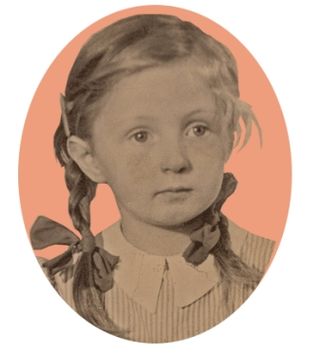Spirituality
Spiritual and Inspirational, 'A Spiral Life'.
The ordinary and extraordinary go together.
Posted January 31, 2018

Scotswoman Jean, born in 1941, with no wish to become a celebrity, insists that the kind of life she has led is not out of the ordinary, yet to many it will seem remarkable. Less than tall in stature, her tale nevertheless packs a significant emotional and spiritual punch. She wrote the first part of her 2010 autobiography, 'A Spiral Life',* she says, 'Because many people asked me to', and, 'to help others'.
Life's challenges began when the Luftwaffe bombed Glasgow, her home town, mercilessly when she was six weeks old. Her parents had married at the beginning of WW2, but her doctor father—a Captain in the Medical Corps —was mostly absent. Aged four, Jean had a powerful dream about walking, anxious and lost, in a dark wood, then seeing and approaching a huge tree from which shone a bright light, which was streaming from the archetypal figure of Jesus. 'He was looking directly at me, smiling and filling me up with... an infinite ocean of love'.
She awoke feeling light, happy and free. The experience gave her a valuable degree of emotional protection. It was well-timed, for soon after her depressed mother tragically committed suicide. Badly traumatized by wartime experiences, and later becoming in his daughter's words, 'a devastating alcoholic', her father soon entrusted Jean to the care of his sister, Mary, and his 76-year-old widowed mother.
These were two very devoted Christian souls. Intelligent and creatively gifted, Jean flourished at home, in church, at school and in supplementary art classes, but stress was again building to a climax when, aged eleven, alone outdoors one day, she once more experienced a kind of bliss: 'I was caught up in the flowing movement of the trees...and I felt myself disappearing into a huge, enveloping, golden light, endless, joyful and real, real, Real'. Within a year her beloved grandmother had died and a new life-phase began for Jean. She says that a pattern of visionary dreams and experiences like this was central to keeping her mental balance throughout life.
At this time, her father took a job overseas for a few years and Jean went to boarding school. It was a highly structured place of physical austerity, entirely unsympathetic to her sensitive nature. She felt an outsider, but nevertheless shone academically. Having a sense of divine guidance to 'serve others', despite strong ability and inclination towards the arts, Jean went to Edinburgh University to study medicine. Here, she again felt profoundly anxious, lost and alone, to the point of becoming near-suicidally depressed in her fourth year, but another uplifting dream - of a smiling golden-hued boy-man - together with the wisdom of a psychiatrist she consulted, helped her continue.
Finding no consolation in Christianity at the time, she began an exploration of the 'Bhagavad Gita', one of Hinduism and Vedanta's most sacred texts. Self-doubt remained a theme of her life, fuelled by her father's latest intensely painful and humiliating rejection of her and all of her noblest endeavours, but yet another dream helped sustain her. This time Jean was one of millions of people approaching a great source of light, a Buddha-like young man seated on an ornate golden throne. 'In some ways, this was my golden Self', Jean wrote later. 'I stood before this glorious being... He slowly raised his eyes and looked at me. It is impossible to explain what he conveyed, but it was something so real, so very, very real, so calm yet loving, gracious yet powerful and full of the radiant energy that had sent his light spreading out over the long distance I had walked to find him. I felt myself dissolving into wave upon wave of bliss...'
After qualifying as a doctor, Jean went to New York where she became disillusioned with hospital medicine. She was convinced that patients' emotional states affected the course of their illnesses. Seeking to research this, she returned to Edinburgh to start a PhD course in pharmacology, but within a year realized it led to a dead-end. Back in America, torn in a number of directions - art, clinical medicine or research; Christianity, the Quakers and a growing interest in Vedanta - she started getting horrendous, lengthy migraine attacks. For a period, on the surface, her life was a success. She landed a prestigious neuro-pathology research post at Harvard University, and was later offered the chance to head up a multi-million dollar national project, but an existential crisis was brewing. Her friendly boss once asked tellingly, 'You have everything but you are never happy... Just what is it you want?'

A victim of her remarkable creative capabilities, intellectual powers and emotional sensitivity, despite valuable personal and work relationships, Jean still felt completely alone. Having met and allied herself to 'Swami', an elderly spiritual teacher in New York, she joined the Vedanta Society in about 1970.** She felt particularly comforted by the idea, 'That it is possible to transcend the body through systematic practice and meditation and even go beyond the realm of emotion, intellect and more, beyond which you discover the very core of who you are'. She wrote, 'I already knew where I was heading, away from efforts to make an impression in the "ordinary" world and to establish myself once and for all in the "inner worlds" which as yet I knew about sketchily'.
When Swami died in late 1977, Jean found the ensuing period excruciating. She had very little money and still felt she must serve humanity in some active, perhaps medically related, way. The spiritual impulse remained strong, however, and the decision formed firmly in her mind to become a nun in a Vedanta convent in Northern California. In this choice, she felt supported by a further powerful dream from a few years earlier in which the man who brought Vedanta from India to America in the 1890s, Swami Vivekananda, singled her out of a large crowd and placed a huge diamond-like stone against her forehead. Jean immediately, 'Felt the light and energy it contained flooding my whole being... My head was like a huge light radiating over the universe. Everything came to a stop and there was the utmost silence, peace and knowledge, not the kind (of knowledge) that talks, the kind that is.'
A new stage was beginning. Having taken the name Sister Gayatripana, she stayed in the convent for twenty-two years, although it was by no means plain sailing. The struggle between worldliness and spirituality continued as a theme in her life. Jean now lives back in Scotland, not far from where she was born. Travelling her own path, she remains faithful to the memory of Vedanta's founders, Sri Ramakrishna and Swami Vivekananda, and her teacher, 'Swami'. Despite all the special dreams and other interior activity, she reports that her professional life has not been that unusual, other than that she has changed course several times after coming up against massive barriers. It is clear that she has been engaged in numerous regular activities, often with a degree of distinction, demonstrating that a noetic or spiritual life does not have to be spooky. 'Everyone has the ability to tap into these inner resources', she says, 'Which cost nothing and do not cause serious side effects or addiction'.
Perhaps Jean will write a second volume about her astonishing spiral life, bringing the remarkable tale up to date. She has weathered great hardships and intense emotional traumas. She has seen and experienced things in dreams and visions that most of us can only imagine. In the darkest times, she has discovered somehow the great universal source of light, power, energy, wisdom, knowledge, strength, peace and love. Her message is surely, then, one of hope.
* 'A Spiral Life' by Jean C. MacPhail (XLibris Corporation, 2010)
** For more information about Vedanta, see Larry's post of 28 November 2016:




